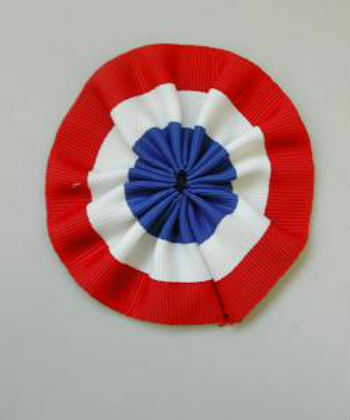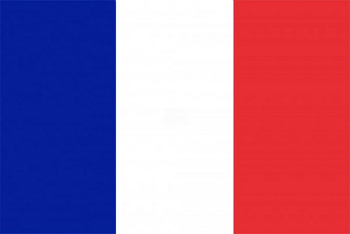THE France flag it is made up of three vertical lines in blue, white and red.
It was established as the official symbol of the French Republic and the only French pavilion since 1794.
current flag of france
Origin
The history of the French flag dates back to the French Revolution, which began in 1789. At the time, revolutionaries wore a tricolor circle (called headdress, in French) to indicate who was a supporter of the fight.
This symbol became so popular that the Constituent Assembly in 1790 decided that these colors would replace the old white flag of the monarchy.
From that moment on, all warships and merchants should hoist it, as well as the flag should be present in public buildings.

Meaning
The colors of the French flag represent:
White – the monarchy;
Blue and red – the colors of Paris.
In this way, the three colors arranged vertically would symbolize the eternal bond of union between the people and the monarchy.
They also represent the three slogans of the French Revolution: liberty, equality, fraternity (Liberté, Egalite, Fraternité).
Another interpretation points out that blue indicates legislative power; the white, the executive; and the red, the people.
History
In 1794, during the period of the Convention, the tricolor flag was adopted as the official pavilion.
Initially, the order of colors on the French flag was red, white and blue. Legend has it that it was the painter Jean-Louis David (1748-1825), official painter to Napoleon Bonaparte, who chose the order of the current colors: blue must always appear next to the mast.
With the return of Louis XVI, brother of Louis XIV, to the throne of France, the tricolor flag was replaced by the old Bourbon flag, which was entirely white.
The blue, white and red flag would be recovered, precisely, in the July Revolution (1830), when the insurgents placed it on the barricades while fighting against King Charles X.
However, even among Republicans, the flag was not unanimous.
On February 25, 1848, supporters of a socialist republic wanted to change the three colors by replacing it with an entirely red flag.
It was the poet Alphonse Lamartine (1790-1869) who convinced them that the tricolor pavilion, loaded with stories of struggle against tyranny and war, also represented them.
Read more:
- France
- French Revolution
- Constituent Assembly in the French Revolution
- neoclassicism
Flag of France Today
The Magna Cartas of 1946 and 1958 (Article 2) established the blue, white and red flag as the national emblem of the Republic.
It must be present in all public buildings such as schools, embassies, city halls and barracks. In addition, it is unfurled in official ceremonies, civil or military.
When the Chief Executive, the President of the French Republic, speaks in public, the French flag must always be behind him.
Also know about other flags:
- Brazil's flag
- flag of argentina
- Canada flag
- Paraguay Flag
- flag of japan
- United states's flag
- England's flag
- Flag of Portugal
- Spanish flag
- Russian flag
- Chile flag

